Powerful eruption at Etna volcano, Italy
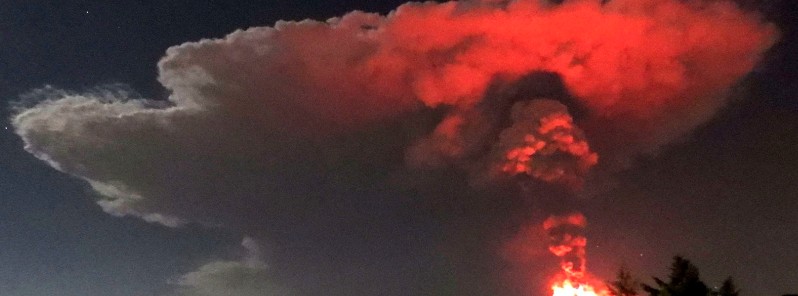
Volcanic activity at Mount Etna, Italy intensified again at 21:10 UTC on February 22, 2021, and evolved into the 5th paroxysm since February 16 — truly spectacular and most powerful in recent years.
The activity started gradually increasing at around 20:47 UTC, reaching high levels by 22:05 UTC, with lava jets up to 300 m (985 feet) above the Southeast Crater.
The Aviation Color Code was raised to Red at 22:05 UTC and is still at this level as of 08:00 UTC on February 23.
A second mouth activated at the crater at 22:27 UTC, producing lava fountains. At 22:28 UTC, lava overflow took place toward the Valle del Bove.
By 23:36 UTC, lava fountains were reaching 1 000 m (3 280 feet) above the crater, as seen in the image below. Lava fountains up to 1 500 m (4 900 feet) were seen before the event was over.
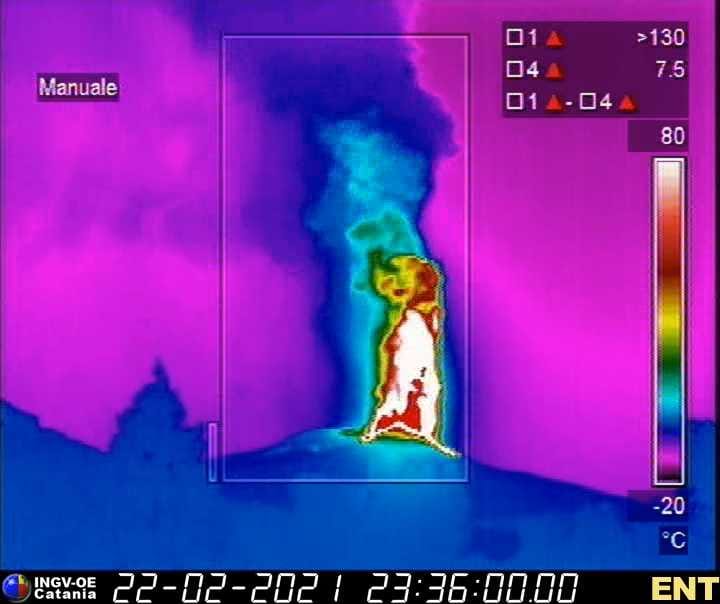
Image credit: INGV
This activity produced an eruptive column that rose several kilometers from the top of the volcano.
Amazingly tall (more than 1500 m) lava fountains and spectacular "fountain fan" during #Etna's violent paroxysm during the night of 22-23 February 2021. View from our home in Tremestieri Etneo. pic.twitter.com/r4ako7UXjr
— Boris Behncke (@etnaboris) February 23, 2021
Da Lipari pic.twitter.com/XZ6kLqQspL
— Annarita (@Annaritacutrupi) February 21, 2021
Stanotte l'Etna ha dato di nuovo spettacolo #Etna pic.twitter.com/38OR5spYg5
— Shirley (@__speech_less_) February 23, 2021
L’Etna nous a offert un magnifique spectacle cette nuit.
(Comme quoi, ça a du bon d’être en quarantaine à bord d’un navire humanitaire en Sicile) pic.twitter.com/fkyUK98P8r— Nejma Brahim (@NejmaBrahim) February 23, 2021
Volcanic tremor reached maximum values at 23:50 UTC, followed by a sudden decrease, but still at high values.
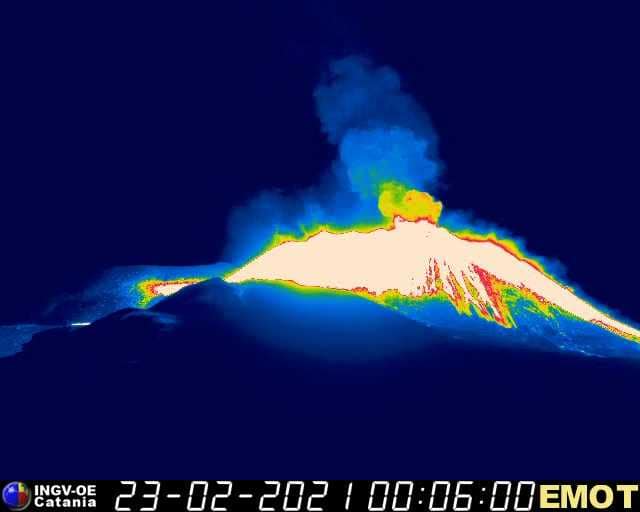
Image credit: INGV
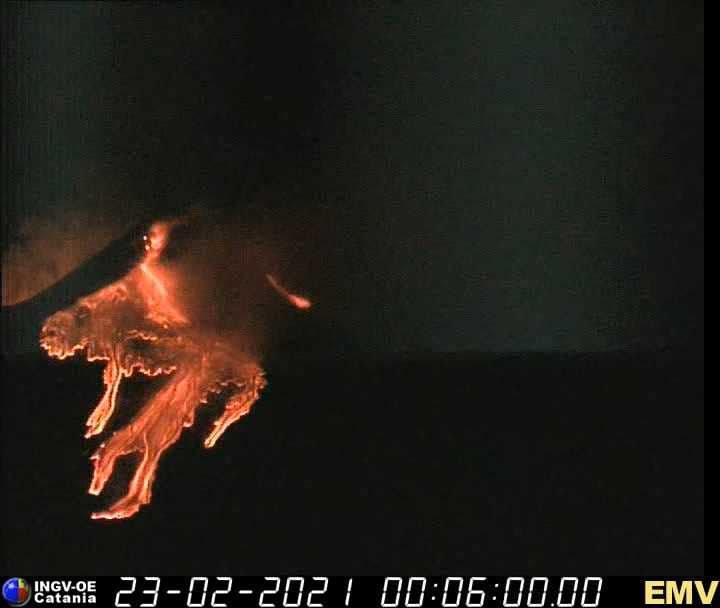
Image credit: INGV
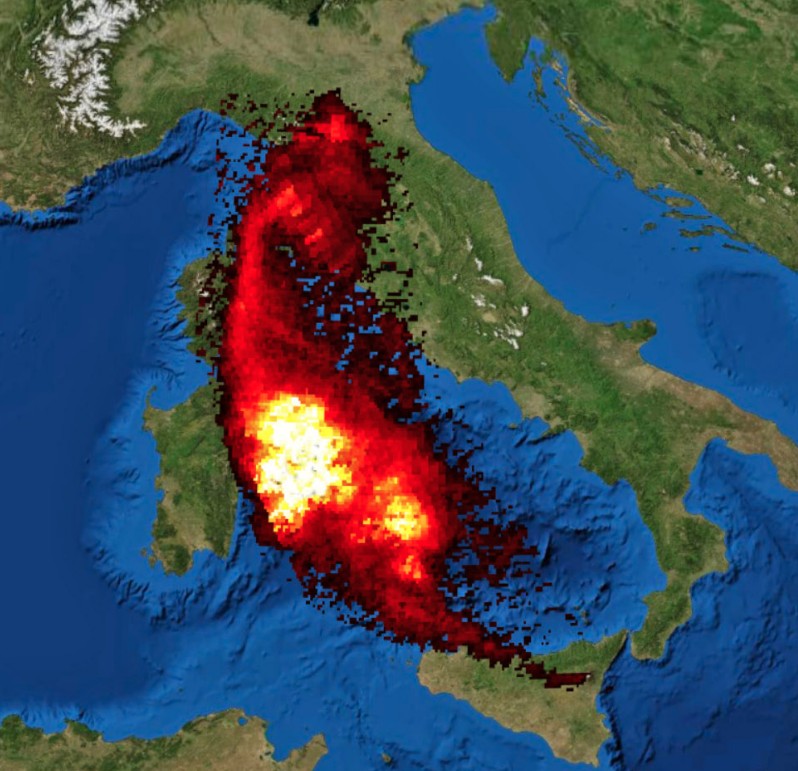
SO2 total column on February 23, 2021. Credit: Copernicus EU/Sentinel-5, ADAM Platform, Antonio Vecoli
A sudden decrease in the height of lava fountains started at around 00:15 UTC on February 23 but explosive activity continued.
Another intensification started at 03:50 UTC, accompanied by ash emissions from the Southeast Crater and two small lava flows.
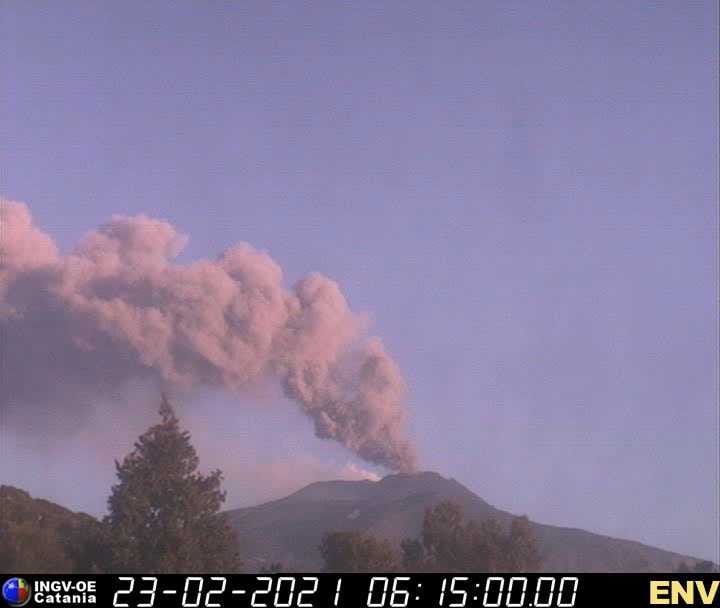
Image credit: INGV
"Did I call the February 20 – 21 paroxysm of Etna incredibly powerful? Well, its successor, on the night of February 22 – 23, was MUCH more powerful," said INGV's Boris Behncke.
"Subplinian eruption column seen from home, Tremestieri Etneo, February 23, 2021, about 01:00 local time:"
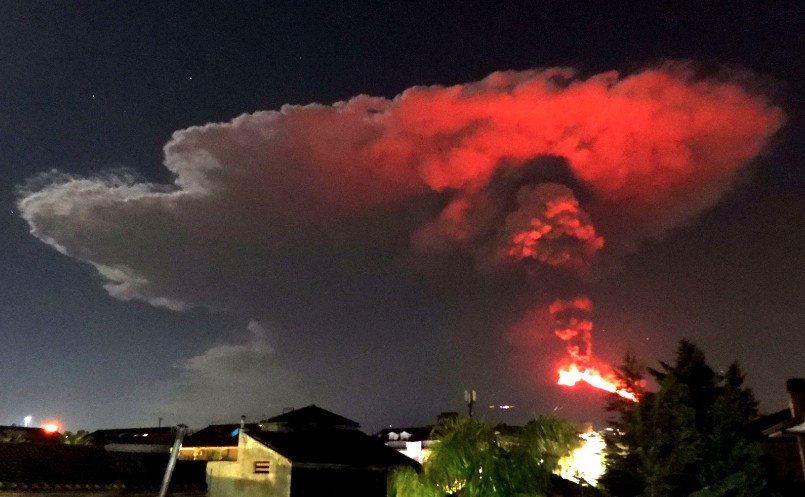
Image credit: Boris Behncke, INGV



Read more:
Intense explosive activity at Etna volcano, Aviation Color Code raised to Red, Italy (Published February 16 – 1st paroxysm)
Spectacular eruption at Etna volcano, Italy (Published February 18 – 2nd paroxysm)
Third paroxysm with very strong ash emission to 10 km (33 000 feet) a.s.l. at Etna volcano, Italy (Published February 19 – 3rd paroxysm)
'Incredibly powerful' paroxysm at Etna, lava fountains exceeding 1 000 m (3 300 feet) in height (Published February 21 – 4th paroxysm)
Geological summary
Mount Etna, towering above Catania, Sicily's second-largest city, has one of the world's longest documented records of historical volcanism, dating back to 1500 BCE.
Historical lava flows of basaltic composition cover much of the surface of this massive volcano, whose edifice is the highest and most voluminous in Italy.
The Mongibello stratovolcano, truncated by several small calderas, was constructed during the late Pleistocene and Holocene over an older shield volcano. The most prominent morphological feature of Etna is the Valle del Bove, a 5 x 10 km (5.1 x 6.2 miles) horseshoe-shaped caldera open to the east.
Two styles of eruptive activity typically occur at Etna. Persistent explosive eruptions, sometimes with minor lava emissions, take place from one or more of the three prominent summit craters, the Central Crater, NE Crater, and SE Crater (the latter formed in 1978).
Flank vents, typically with higher effusion rates, are less frequently active and originate from fissures that open progressively downward from near the summit (usually accompanied by strombolian eruptions at the upper end).
Cinder cones are commonly constructed over the vents of lower-flank lava flows. Lava flows extend to the foot of the volcano on all sides and have reached the sea over a broad area on the SE flank. (GVP)
Featured image: Etna volcano at 00:00 UTC on February 23, 2021. Credit: Boris Behncke, INGV

Commenting rules and guidelines
We value the thoughts and opinions of our readers and welcome healthy discussions on our website. In order to maintain a respectful and positive community, we ask that all commenters follow these rules.